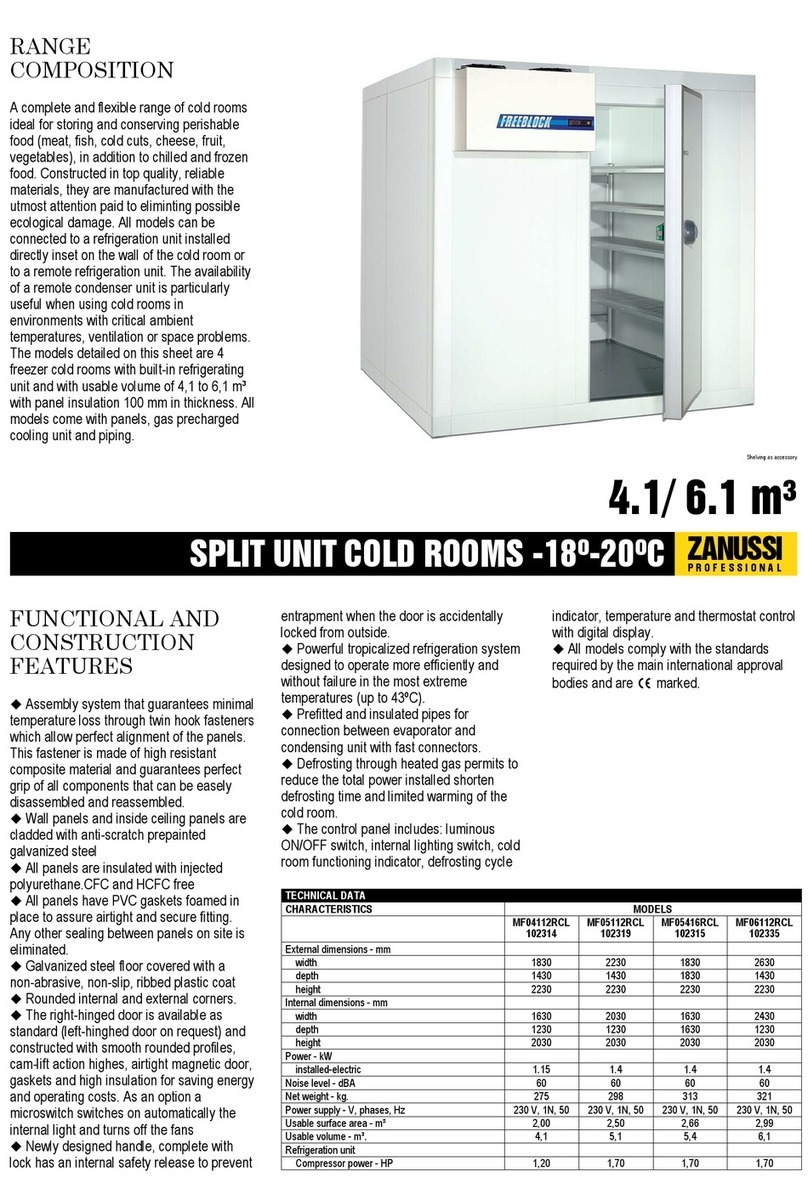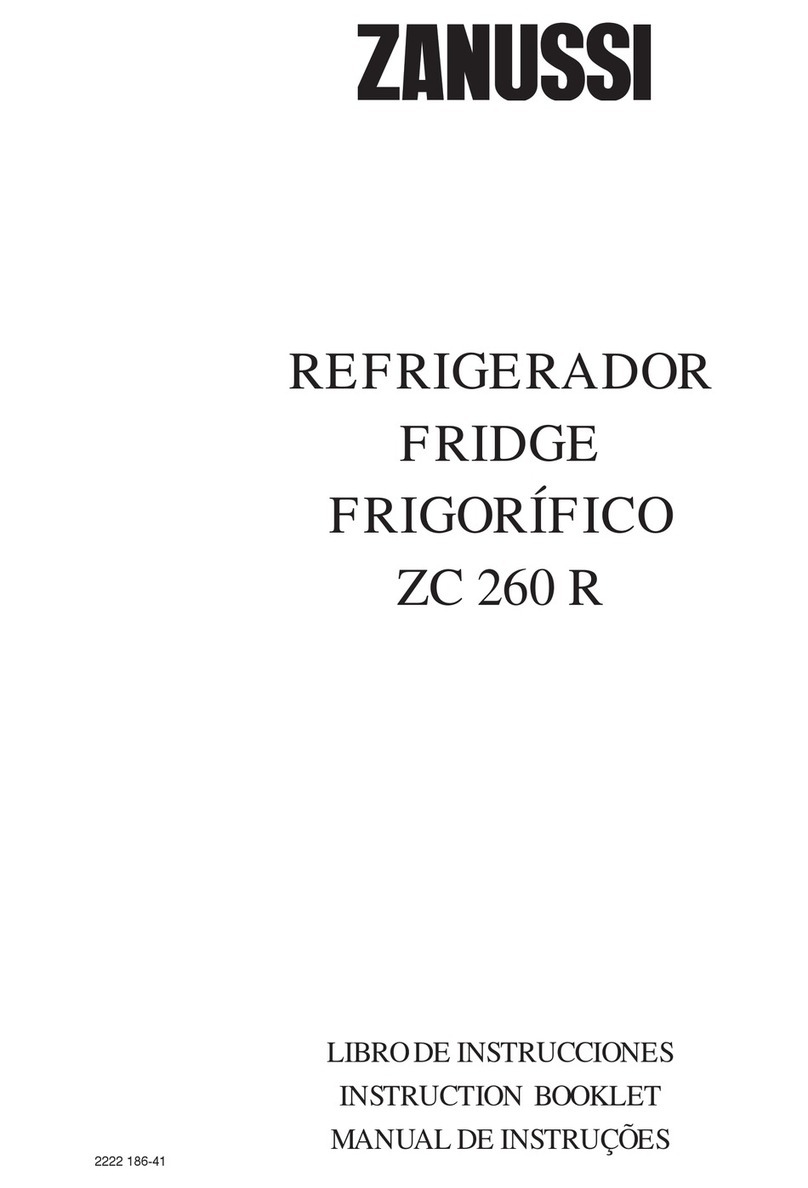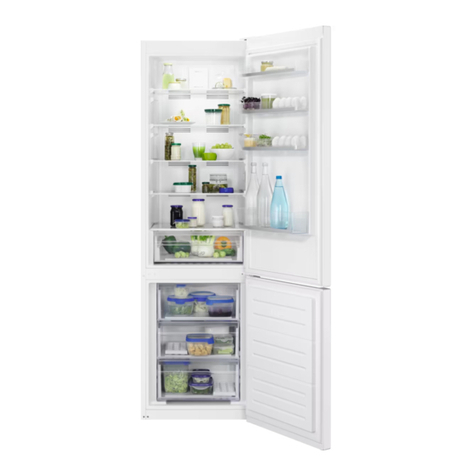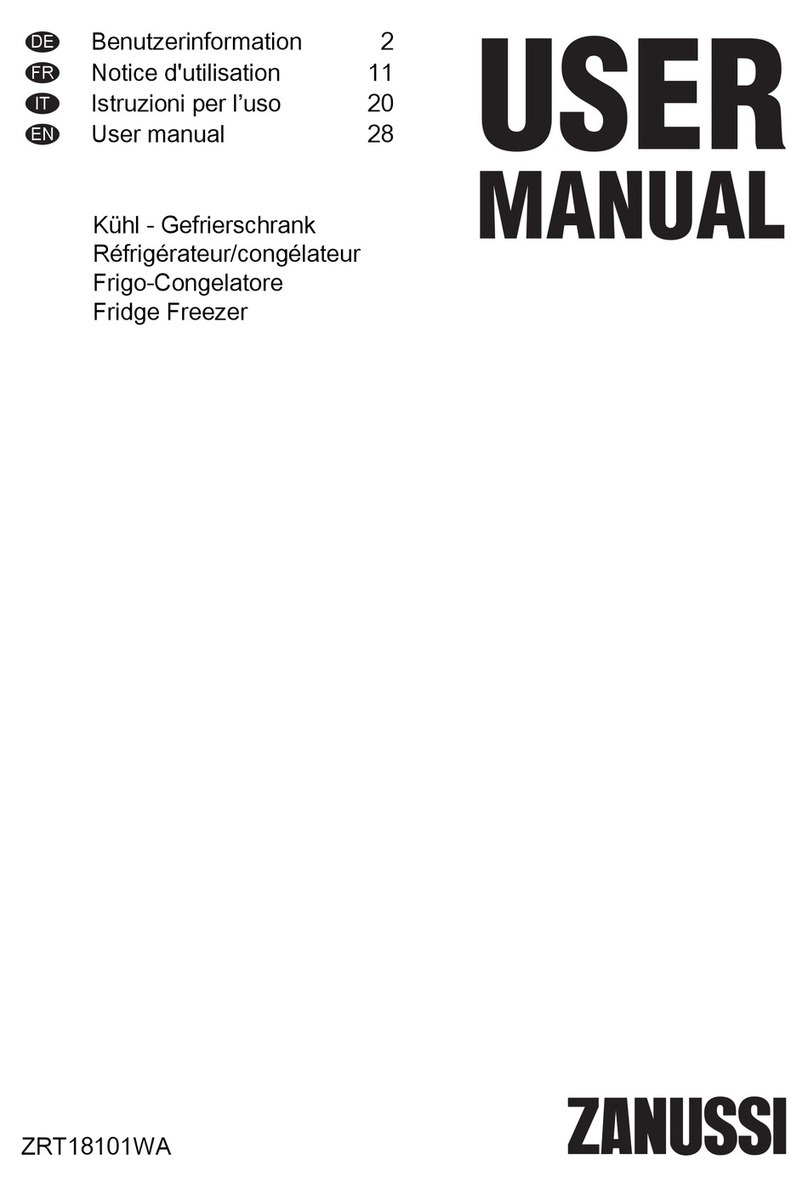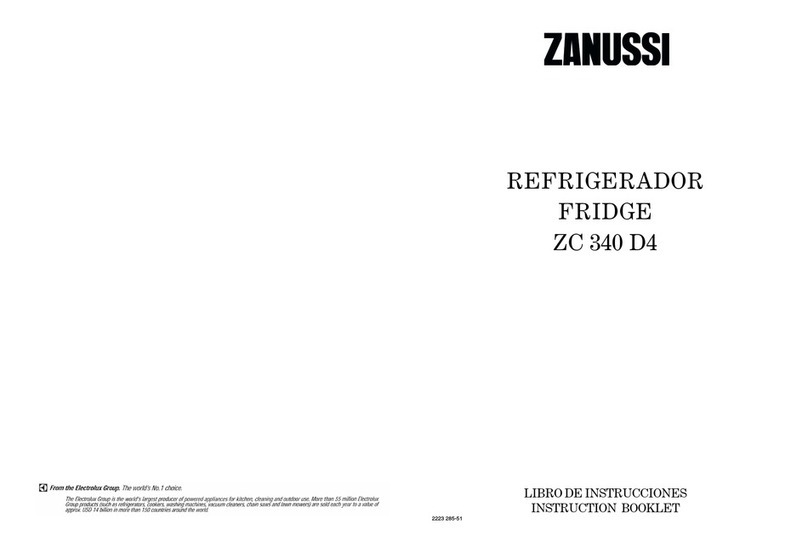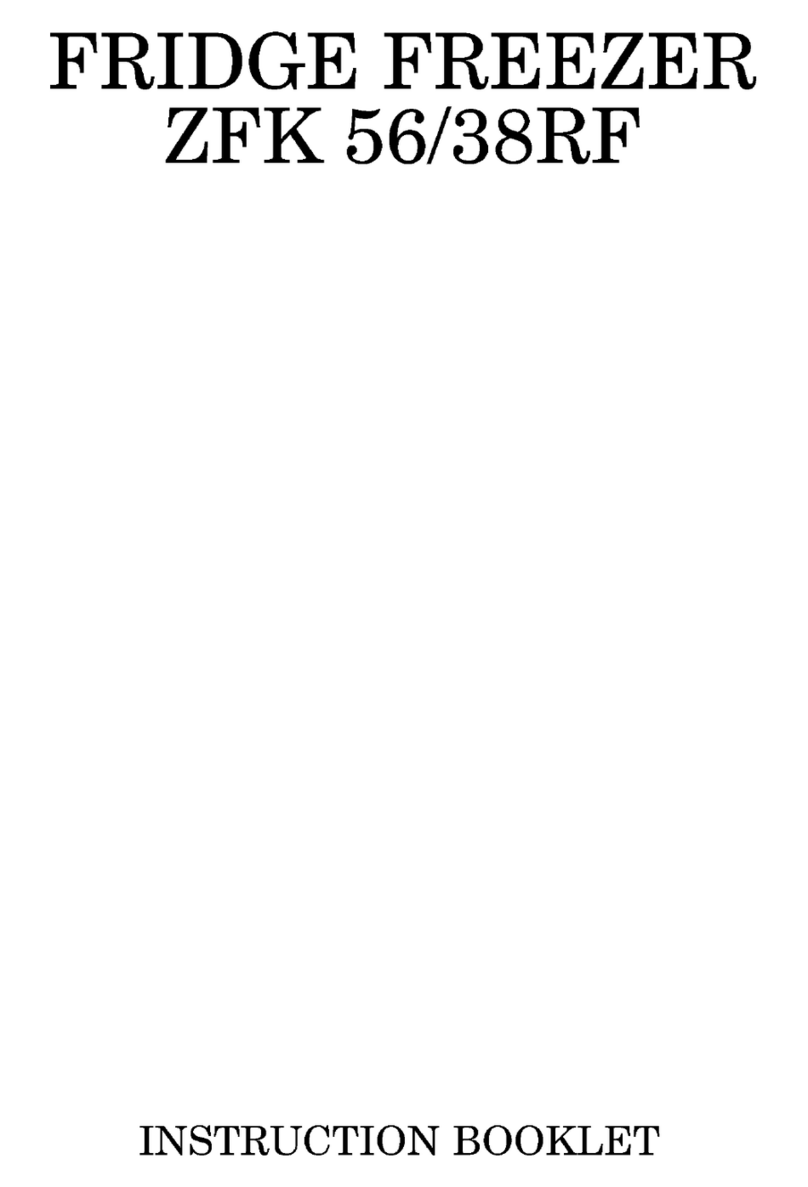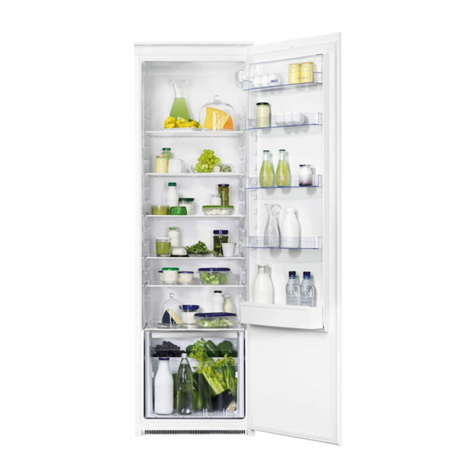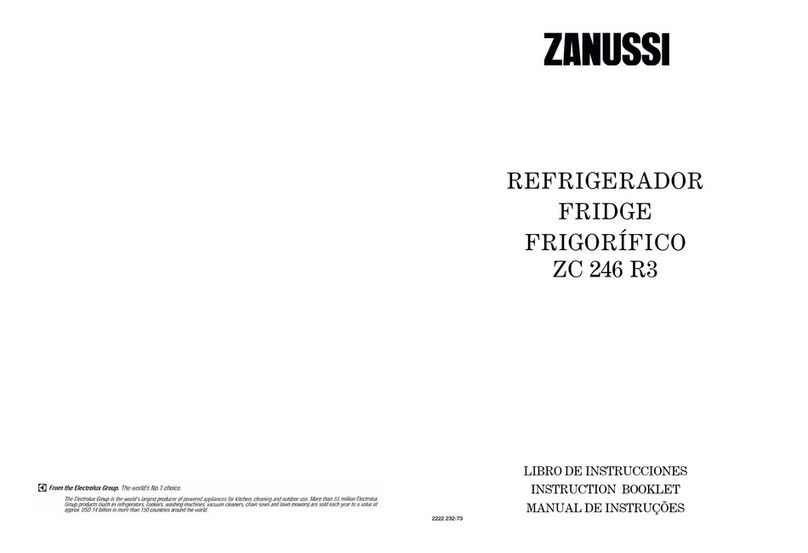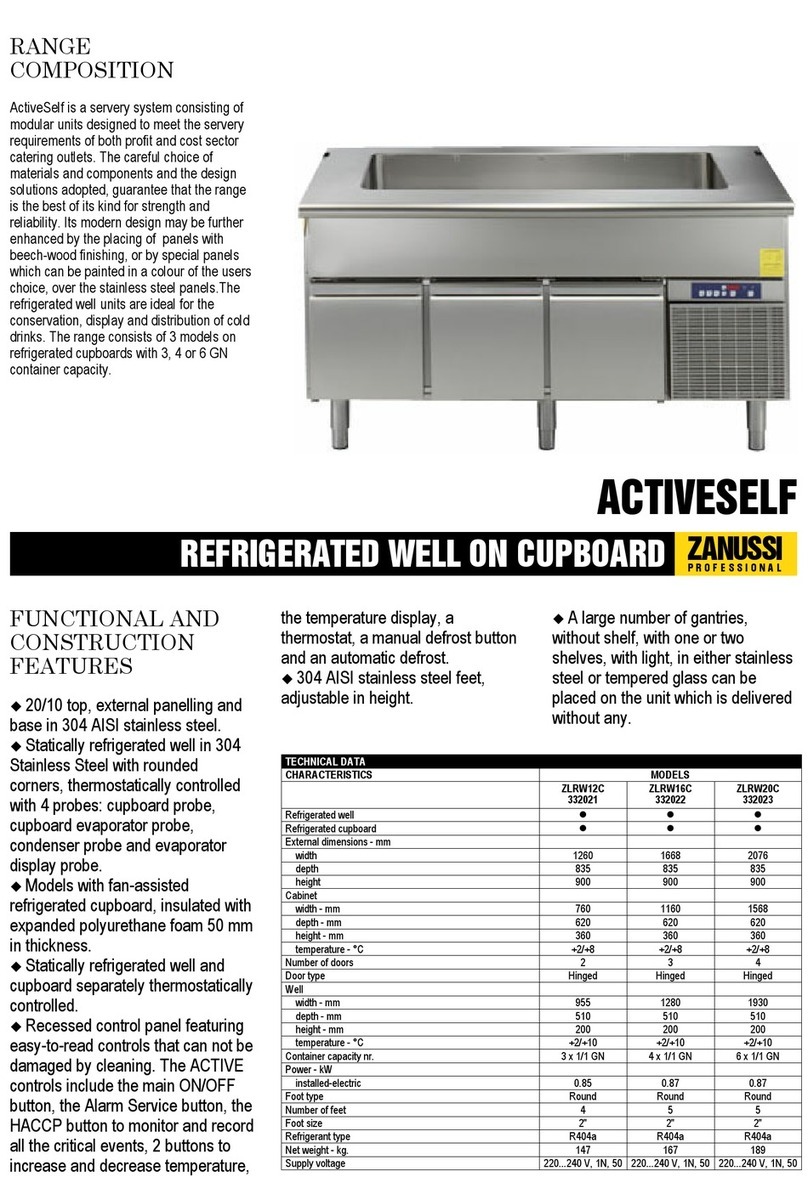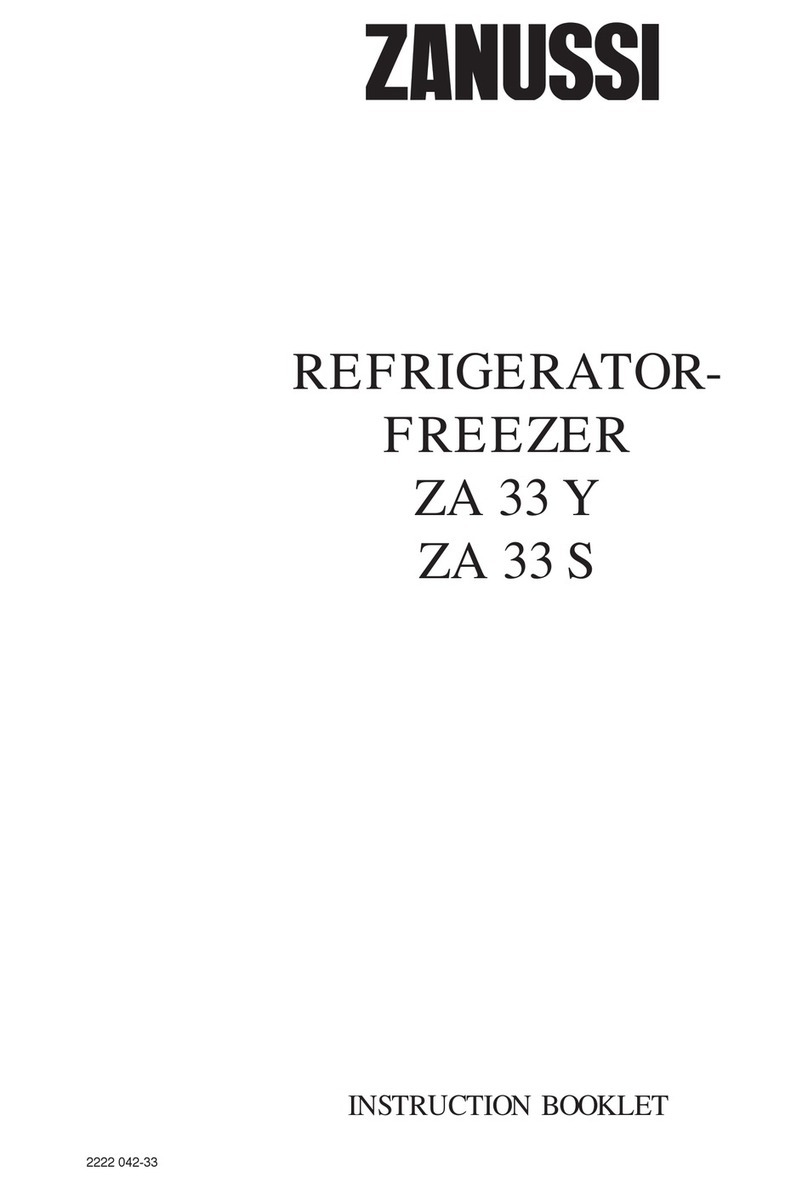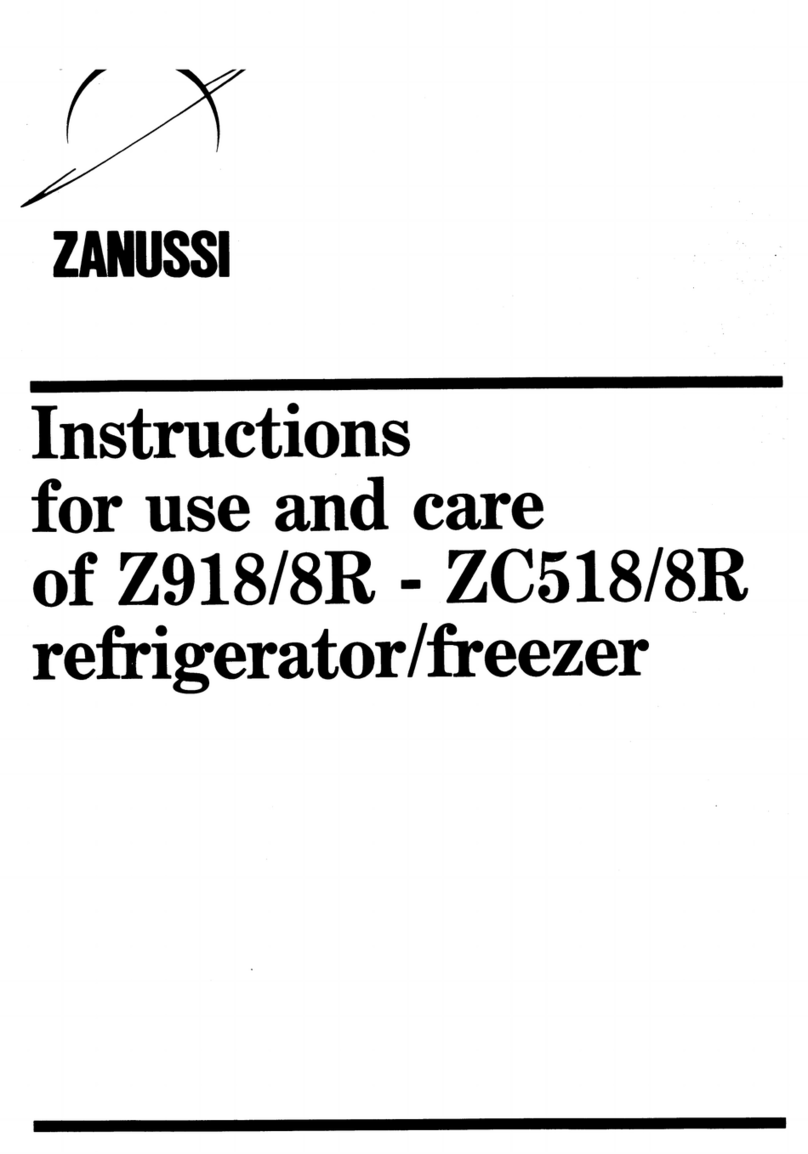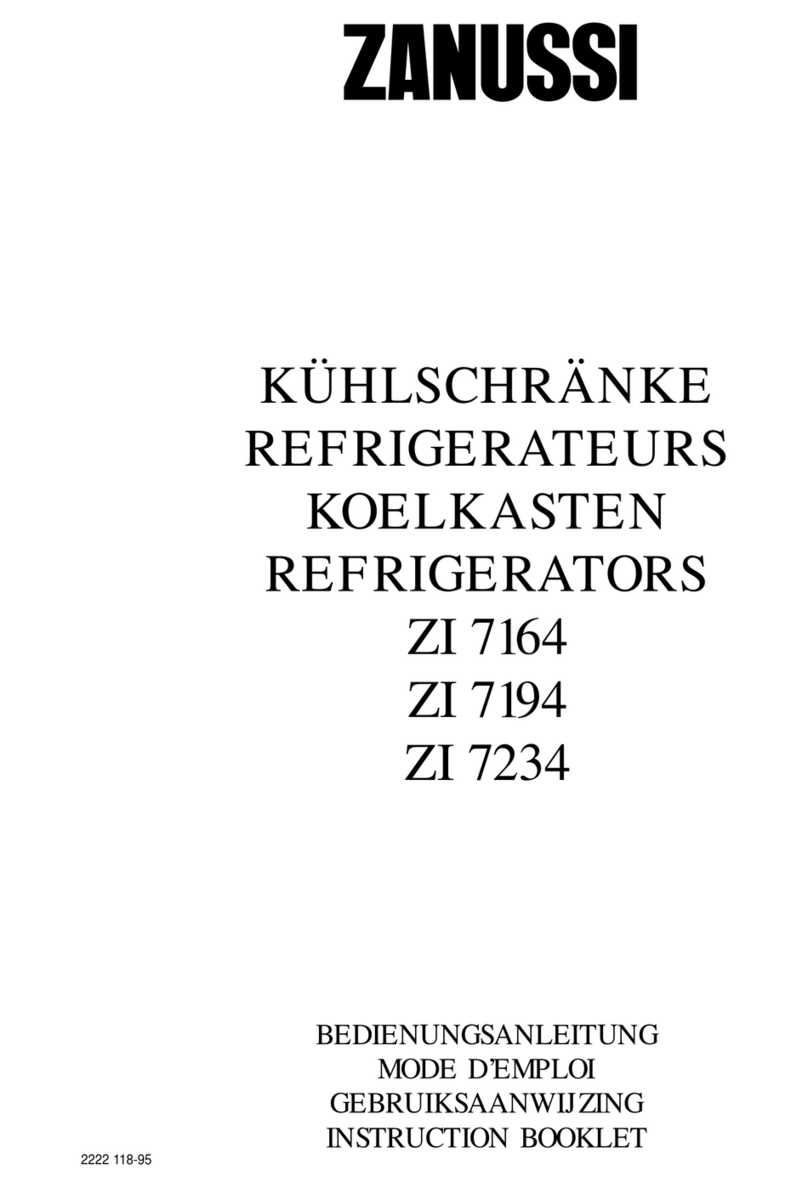5
Normal Operating Sounds
• You may hear faint gurgling or bubbling sounds
hen the refrigerant is pumped through the coils
or tubing at the rear, to the cooling
plate/evaporator or to the fixed freezer shelves.
• When the compressor is on, the refrigerant is
being pumped round, and you ill hear a hirring
sound or pulsating noise from the compressor.
• A thermostat controls the compressor, and you
ill hear a faint ’click’ hen the thermostat cuts in
and out.
Making ice cubes
The appliance is provided ith one or more trays for
ice-cubes trays.
Fill the tray(s) 3/4 full to give the ice space to expand
and place them in the freezer compartment.
To release the ice cubes simply give the tray a slight
t ist.
Do not use sharp or metallic instruments to remove
the trays from the freezer.
Fresh ood re rigeration
To obtain the best performance, do not store arm
food or evaporating liquids in the refrigerator; do
cover or rap the food, particularly if it has a strong
flavour.
Do not cover the shelves ith any protective
material, such as paper, cardboard or plastic, hich
may obstruct the air circulation through them.
To help you use your refrigerator correctly, here are
some more useful hints:
Ra meat (beef, pork, lamb & poultry or chicken):
rap in polythene bags and place on top of the salad
crispers.
Meat can only be stored sa ely in this way or
one or two days at the most.
Fruit & vegetables: these should be thoroughly
cleaned and placed in the bottom salad crispers.
Butter & cheese: these should be placed in special
airtight containers or rapped in aluminium foil or
polythene bags to exclude as much air as possible.
Milk bottles: these should have a cap and should be
stored in the bottle rack on the door.
Thawing
Frozen food, prior to being used, can be tha ed in
the fridge or at room temperature depending on the
time available. Small food items may even be cooked
from frozen; in this case cooking ill take longer.
Any frozen food hich is allo ed to tha accidentally
should either be eaten as soon as possible or thro n
a ay. Alternatively, if the food is uncooked and has
not been completely defrosted it can be cooked and
then refrozen.
Meat, fish and fruit should be tha ed in the
refrigerator compartment and small pieces of meat
can even be cooked hile still frozen, but you must
ensure that it is thoroughly cooked through.
Vegetables should be directly immersed in boiling
ater; ready-cooked dishes can be placed directly in
the oven in their aluminium rapping.
A micro ave oven is particularly suitable for tha ing
any type of frozen or deep-frozen food: follo the
oven instructions, particularly regarding the
placement of aluminium rapping or containers in
the oven.
De rosted cooked ood must never be re rozen.
Frozen ood storage
When first starting-up or after a period of use, before
putting the products in the freezer compartment let
the appliance run for at least t o hours on the
coldest setting, then turn the thermostat knob to the
normal opertion position.
Do not exceed the storage period indicated by the
manufacturer.
Finally, do not open the door frequently or leave it
open longer than is absolutely necessary.
Important
Do not put carbonated liquids, (fizzy drinks etc.), in
the freezer compartment.
Ice Iollies, if consumed immediately after removal
from the freezer, can cause lo temperature skin
burns.
Do not remove items from the freezer if your hands
are damp/ et, as this could cause skin abrasions or
“frost/freezer burns”.

